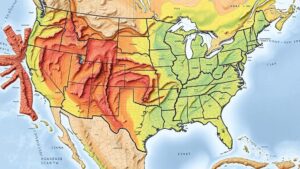How to Use Anthropological Studies to Identify Artifact-Rich Sites
Introduction
Understanding how to identify artifact-rich sites is crucial for anthropologists and archaeologists seeking to unveil the mysteries of past civilizations. Through anthropological studies, researchers can apply various methodologies to locate areas rich in historical artifacts. This article outlines the practical approaches derived from anthropological studies that enhance site identification, highlighting the intersection of theory and practical application.
Theoretical Framework
Anthropological research provides a comprehensive framework for understanding human behaviors and cultural practices. One of its primary goals is to analyze the relationships between people and their material culture, which often leaves behind physical artifacts. Through various anthropological methods, such as ethnographic mapping and remote sensing, researchers are able to identify patterns that signify potential artifact-rich locales.
Ethnographic Mapping
Ethnographic mapping is the systematic representation of cultural data in geographical form. This technique often involves collaborations with local communities to gather oral histories and traditional knowledge, subsequently overlayed onto maps. For example, in the late 1990s, researchers in the Andes of Peru used ethnographic mapping to locate ancient agricultural terraces and irrigation systems, leading to the discovery of numerous artifact-rich sites that had been previously unrecorded.
Remote Sensing Technologies
Advancements in technology have allowed for non-invasive methods of site identification. Remote sensing techniques, such as LiDAR (Light Detection and Ranging) and satellite imagery, enable researchers to detect surface anomalies indicating potential sites of interest. A prominent example can be observed in the Banyan Tree Temple region of Cambodia, where LiDAR revealed hidden structures beneath dense forest canopies, which were subsequently excavated, yielding a wealth of artifacts dating back to the Khmer Empire.
Field Surveys and Excavations
Field surveys remain a cornerstone of artifact identification. Systematic surveying permits researchers to gather empirical data about artifact distribution, while excavation offers insights into stratigraphy and contextual artifacts. Both methods are essential for validating the presence of cultural remains.
Systematic Surface Surveying
Systematic surface surveying involves walking predetermined transects across an area to collect visible artifacts. This method allows for rapid assessment of site potential. An illustration of this can be found in the work conducted on the Great Plains of the United States, where systematic surveys revealed extensive bison kill sites with abundant lithic tools, linking social practices to environmental adaptations.
Controlled Excavations
Controlled excavations are designed to retrieve artifacts from specific layers, assisting in the understanding of temporal changes. For example, the excavations at Çatalhöyük in Turkey have provided comprehensive insights into the Neolithic societies, illustrating layer-by-layer advancements in technology and culture spanning several millennia. Such detailed stratigraphic records are pivotal for identifying artifact-rich contexts.
Collaborative Approaches
Collaboration across disciplines enhances the efficacy of identifying artifact-rich sites. By integrating insights from historians, geologists, and local communities, researchers can create a multi-dimensional understanding of potential artifacts.
Community Engagement
Engaging with local communities can yield invaluable knowledge about historical land use. In Guatemala, collaboration with indigenous communities led to the identification of ancient Maya trade routes, revealing unstudied urban centers rich in artifacts that might have otherwise gone undetected. This emphasizes the importance of reciprocal relationships in anthropological research.
Interdisciplinary Research
Interdisciplinary research combining anthropology with geography and environmental science has shown significant promise. Archaeological studies in the Mississippi River basin have benefited from geographic information systems (GIS) that model past landscapes, guiding survey efforts to areas likely to possess cultural artifacts associated with ancient dwellers.
Conclusion
The identification of artifact-rich sites through anthropological studies is both a science and an art. By employing a combination of traditional methods, technological advancements, and collaborative efforts, researchers can significantly enhance their chances of uncovering the remnants of human culture. These systematic approaches not only contribute to our understanding of historical societies but also help preserve their legacies for future generations.
Actionable Takeaways
- Use ethnographic methods to interface with local communities for enriched data collection.
- Incorporate remote sensing technologies for efficient identification of potential sites.
- Conduct systematic field surveys to gather empirical evidence and validate assumptions.
- Engage in interdisciplinary collaboration to leverage diverse expertise and perspectives.
References
1. I. Hodder, Entangled: An Archaeology of the Relationships Between Humans and Things, Wiley-Blackwell, 2012.
2. C. C. Lakey, Combining Ethnography and Geospatial Technologies in Archaeological Research, *American Antiquity,* vol. 82, no. 3, 2017, pp. 522-543.
3. D. C. Donahue, Landscape Approaches to Site Identification in the Great Plains, *Journal of Archaeological Method and Theory,* vol. 25, no. 4, 2018, pp. 944-967.


